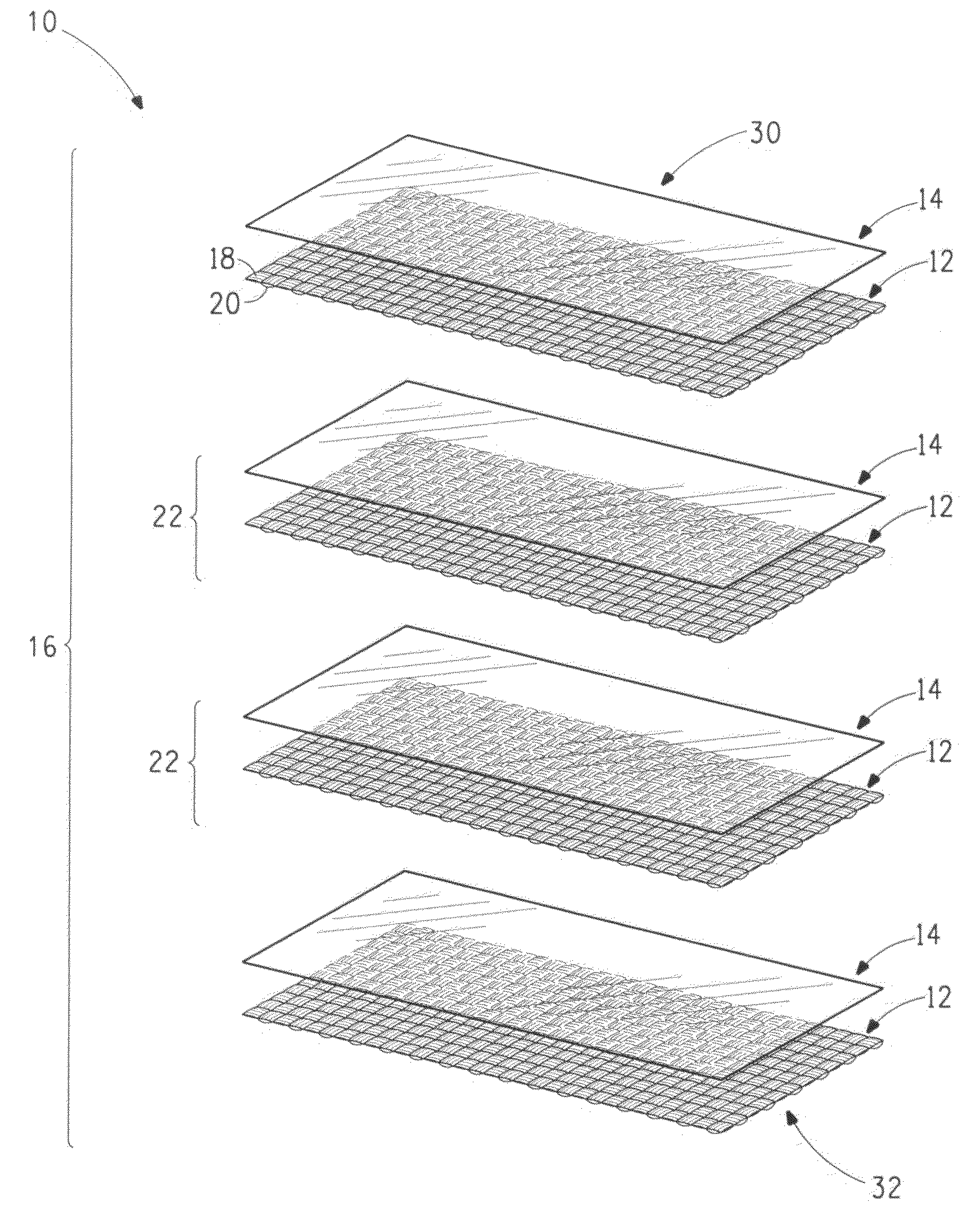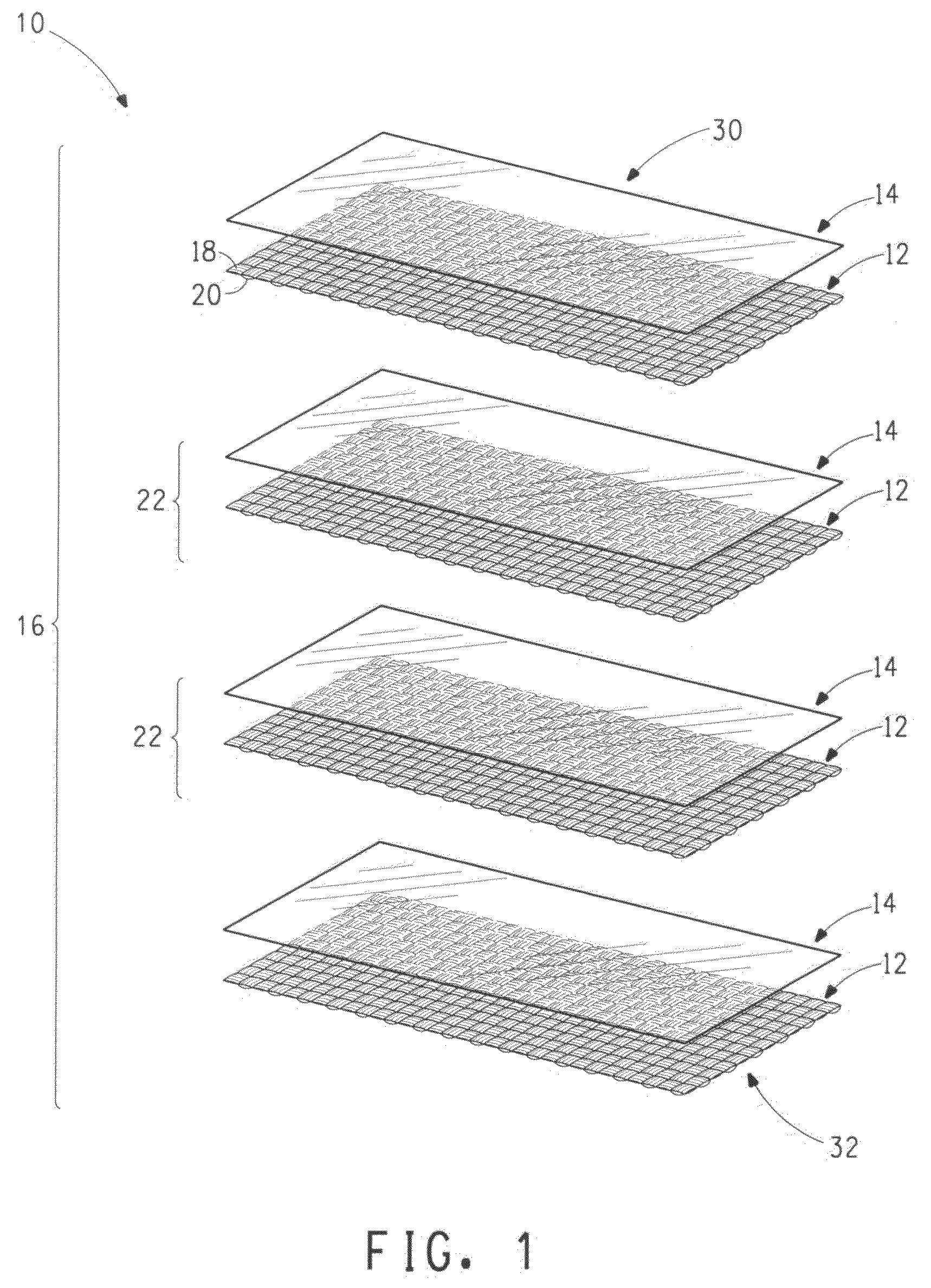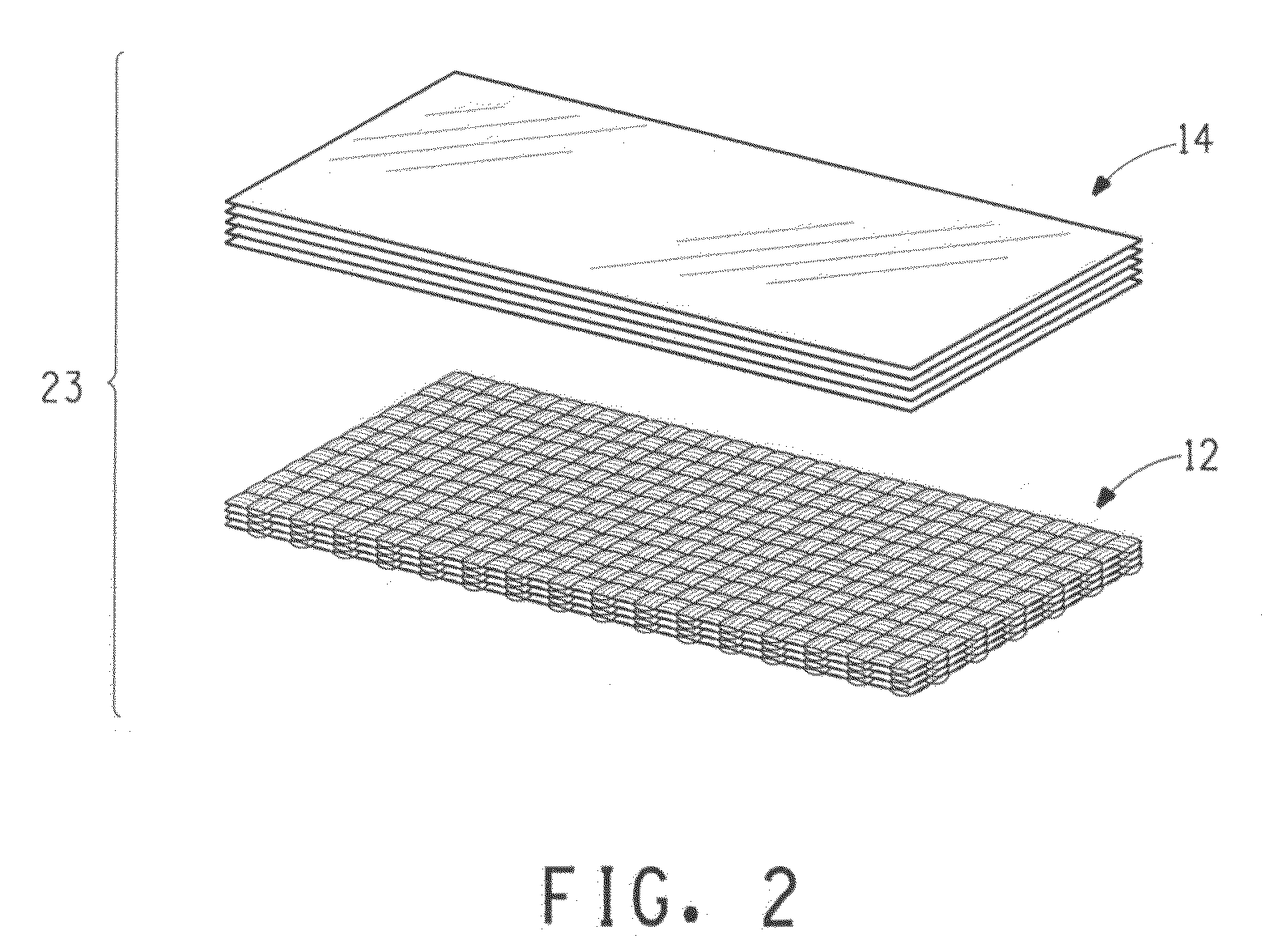Ballistic resistant body armor articles
a technology of ballistic resistance and body armor, applied in the field of ballistic resistance body armor, can solve the problems of increasing the cost and weight of body armor, increasing the cost and weight, and reducing the flexibility of body armor
- Summary
- Abstract
- Description
- Claims
- Application Information
AI Technical Summary
Benefits of technology
Problems solved by technology
Method used
Image
Examples
examples
[0074]The following examples are given to illustrate the invention and should not be interpreted as limiting it in any way. All parts and percentages are by weight unless otherwise indicated. Examples prepared according to the process or processes of the current invention are indicated by numerical values. Control or Comparative Examples are indicated by letters. Data and test results relating to the Comparative and Inventive Examples are shown in Tables 1 and 2.
Description of Layers
[0075]Layers of the following high tenacity fiber fabrics and nonwoven sheet structures were prepared and made into various composite assemblies for ballistic test as follows.
[0076]Fabric layer “F1” was a plain weave woven fabric of 840 denier (930 dtex) poly(p-pheynlene terephthalamide) (or PA) yarn available from E. I. du Pont de Nemours and Company under the trade name of Kevlar® para-aramid brand 129 yarn and was woven at 26×26 ends per inch (10.2×10.2 ends per centimeter).
[0077]Fabric layer “F2” was...
example a
[0082]Twenty four layers of fabric layers F1 of about 15″×15″ were stitched together by stitches forming a quilted stitch pattern having a stitch spacing of about 2 inches (5 cm) and a stitch length of about 0.2 inch (0.5 cm) into an article with an areal density of about 4.73 kg / m2. Ballistic tests were conducted using 0.44 magnum bullets based on the test protocol for NIJ Level IIIA as described in NIJ Standard—0101.04 entitled “Ballistic Resistance of Personal Body Armor”. Results of the ballistic tests for eight shots, including both V50 and backface deformation, as shown in the Table 2, exhibit backface deformations as high as 61 mm but good ballistic V50.
example b
[0083]In this example, a stacked article was made comprising, in order, (a) a first strike section of 5 fabric layers F1, (b) a core section comprising a repeating unit of a fabric layer F1 then a sheet layer S1, the unit repeated 8 times, and (c) a body facing section comprising 6 fabric layers F1. This article construction is referenced herein as 5F1+8(F1+S1)+6F1. This stacked article was made of about 15 inches by 15 inches (38 cm by 38 cm) of each layer held together with stitches forming a quilted stitch pattern having a stitch spacing of about 2 inches (5 cm) and a stitch length of about 0.2 inch (0.5 cm). The areal density of the article was about 4.91 kg / m2. Ballistic tests were conducted using 0.44 magnum bullets based on the test protocol for NIJ Level IIIA as described in NIJ Standard—0101.04 entitled “Ballistic Resistance of Personal Body Armor”. Results of the ballistic tests for two shots, including both V50 and backface deformation, as shown in the Table 2, showed a b...
PUM
| Property | Measurement | Unit |
|---|---|---|
| Length | aaaaa | aaaaa |
| Fraction | aaaaa | aaaaa |
| Fraction | aaaaa | aaaaa |
Abstract
Description
Claims
Application Information
 Login to View More
Login to View More - R&D
- Intellectual Property
- Life Sciences
- Materials
- Tech Scout
- Unparalleled Data Quality
- Higher Quality Content
- 60% Fewer Hallucinations
Browse by: Latest US Patents, China's latest patents, Technical Efficacy Thesaurus, Application Domain, Technology Topic, Popular Technical Reports.
© 2025 PatSnap. All rights reserved.Legal|Privacy policy|Modern Slavery Act Transparency Statement|Sitemap|About US| Contact US: help@patsnap.com



